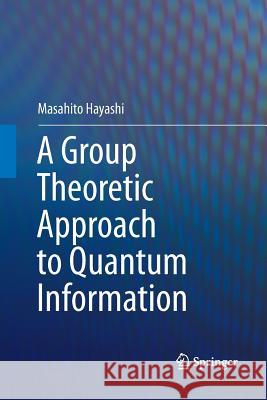A Group Theoretic Approach to Quantum Information » książka
topmenu
A Group Theoretic Approach to Quantum Information
ISBN-13: 9783319832487 / Angielski / Miękka / 2018 / 228 str.
Kategorie BISAC:
Wydawca:
Springer
Język:
Angielski
ISBN-13:
9783319832487
Rok wydania:
2018
Wydanie:
Softcover Repri
Ilość stron:
228
Waga:
0.34 kg
Wymiary:
23.39 x 15.6 x 1.3
Oprawa:
Miękka
Wolumenów:
01
Dodatkowe informacje:
Wydanie ilustrowane











